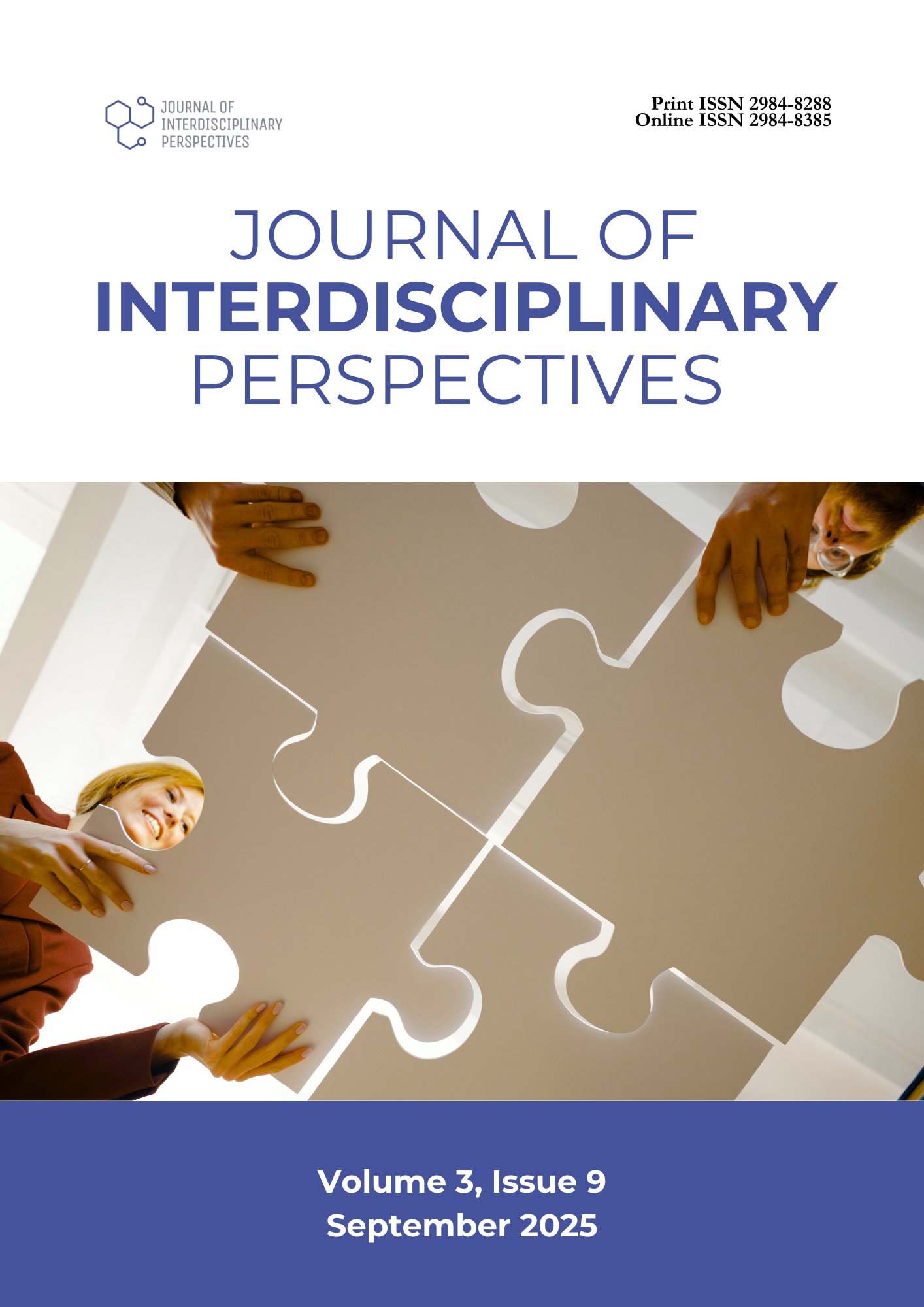Sermon-based Messaging to Foster Social Cohesion in Conflict-affected Communities in Mindanao
DOI:
https://doi.org/10.69569/jip.2025.610Keywords:
Evangelical pastors, Faith-based communication, Sermon-based messaging, Social cohesion, Peace buildingAbstract
Mindanao has faced decades of conflict driven by cultural, religious, and historical complexities. While secular peacebuilding has provided structural solutions, a gap remains in addressing the spiritual dimensions of reconciliation. This study employed a qualitative, multiple-case study approach, incorporating thematic content analysis of sermons and interviews with three Evangelical pastors serving in a Muslim-majority area, an Indigenous community, and a post-conflict barangay. The findings revealed that pastors used biblical storytelling, biblical exposition, and personal testimony as rhetorical strategies to promote unity. Sermons were adapted to address displacement, poverty, and trauma, consistently emphasizing forgiveness, humility, reconciliation, and peace as biblical imperatives. Pastors, however, faced challenges such as pride, mistrust, fear of retaliation, and perceptions of bias. Despite these obstacles, sermons often led to visible acts of repentance, forgiveness, reconciliation, and stronger communal bonds. The study suggests that sermon-based messaging can inform faith-integrated peacebuilding policies in similar conflict zones in building inclusive and sustainable peace.
Downloads
References
Adam, M. (2017). Persuasion in religious discourse: Enhancing credibility in sermon titles and openings. Discourse and Interaction, 10(2), 5–25. https://doi.org/10.5817/DI2017-2-5
Aguilan, V. (2024). Christian traditions: Resources for peacebuilding in the Philippines context. The New Perspective in Theology and Religious Studies, 5(1), 47–64. https://doi.org/10.47900/11q36266
Aguilan, V. R. (2024). Spirituality of struggle: Resistance, repentance, solidarity, and renewal. Asia Journal of Theology, 38(1), 1–16. https://doi.org/10.54424/ajt.v38i1.89
Amnesty International. (2017). The battle of marawi: Death and destruction in the Philippines. Amnesty International. https://www.amnesty.org/en/documents/asa35/7427/2017/en/
Arasaratnam-Smith, L. A., & Deardorff, D. K. (2022). Developing intercultural competence in higher education: International students’ stories and self-reflection. Routledge. https://doi.org/10.4324/9781003229551
Banlaoi, R. C. (Ed.). (2019). The Marawi siege and its aftermath: The continuing terrorist threat. Cambridge Scholars Publishing
Brewer, J. D. (2022). Sociological conceptualizations of religion and peacemaking. In M. Juergensmeyer, J. D. Brewer, & M. K. Jerryson (Eds.), The Wiley Blackwell companion to religion and peace (pp. 497–508). Wiley-Blackwell. https://doi.org/10.1002/9781119424420.ch42
Clines, D. J. (1982). Biblical hermeneutics in theory and practice. Christian Brethren Review, 31(32), 65–76.
Creswell, J. W., & Miller, D. L. (2000). Determining validity in qualitative inquiry. Theory into practice, 39(3), 124–130. https://doi.org/10.1207/s15430421tip3903_2
Del Castillo, F. A. (2022). Laylayan theology: Faith from the margins as social praxis in the Philippines. Asian Journal of Theology and Society, 9(2), 144–158. https://doi.org/10.3390/rel13050391
Enworo, O. C. (2023). Application of Guba and Lincoln's parallel criteria to assess trustworthiness of qualitative research on indigenous social protection systems. Qualitative research journal, 23(4), 372-384. https://doi.org/10.1108/QRJ-08-2022-0116
Figueroa, M. E. K., Rani, D. L., & Manju Lewisnline, G. (2003). Communication for social change: An integrated model for measuring the process and its outcomes.
Ganzevoort, R. R. (2011). Narrative approaches. In B. J. Miller-McLemore (Ed.), The Wiley Blackwell companion to practical theology (pp. 214–223). Wiley-Blackwell.
Garred, M., & Abu-Nimer, M. (Eds.). (2018). Making peace with faith: The challenges of religion and peacebuilding. Bloomsbury Publishing PLC.
Giddens, A. (1982). Hermeneutics and social theory. In Profiles and critiques in social theory (pp. 1–17). Macmillan Education UK.
Gregory, T. (2019). Transformational pastoral leadership. Journal of Biblical Perspectives in Leadership, 9(1), 56–75.
Jack, A. I., Friedman, J. P., Boyatzis, R. E., & Taylor, S. N. (2016). Why do you believe in God? Relationships between religious belief, analytic thinking, mentalizing, and moral concern. PLOS ONE, 11(3), e0149989. https://doi.org/10.1371/journal.pone.0149989
Kwuelum, C. (2024). Navigating the complexities of inter-religious peacebuilding: Implications for theory and practice. Religions, 15(10), 1201. https://doi.org/10.3390/rel15101201
Ledesma, C. H. Q. B., Lapasaran, N. M., Gonzales, N. G., Apoya, A. K., Tantog, A. J. D., & Naparan, G. B. (2025). Lived experiences of interfaith leaders in promoting solidarity and peace in Pagadian City. Canadian Journal of Educational and Social Studies, 5(2), 90-114. https://doi.org/10.53103/cjess.v5i2.335
Lunde-Whitler, J. H. (2015). Paul Ricoeur and Robert Kegan are in unlikely Dialogue: Towards a “narrative-developmental” approach to human identity and its value for Christian religious education. International Journal of Practical Theology, 19(2), 292–316. https://doi.org/10.1515/ijpt-2016-9001
Martin, A. (2024). Pathetical narrative as a persuasive strategy in Protestant sermons. The International Journal of Religion and Spirituality in Society, 14(4), 121–135. https://doi.org/10.18848/2154-8633/cgp/v14i04/121-143
McMahon, D. W. (2018). Analysis of the reception and appropriation of the Bible by Manobo Christians in Central Mindanao, Philippines. Unpublished manuscript.
Mezirow, J., & Taylor, E. W. (Eds.). (2009). Transformative learning in practice: Insights from community, workplace, and higher education. John Wiley & Sons.
Moyer‐Gusé, E., & Dale, K. (2017). Narrative persuasion theories. In P. Rössler (Ed.), The international encyclopedia of media effects (pp. 1–11). Wiley-Blackwell https://doi.org/10.1002/9781118783764.wbieme0082
Obregón, R., & Tufte, T. (2017). Communication, social movements, and collective action: Toward a new research agenda in communication for development and social change. Journal of Communication, 67(5), 635–645. https://doi.org/10.1111/jcom.12332
Oji, N. A. (2024). Influence of preaching’s rhetorical appeal on evangelical listeners’ motivation. Unpublished manuscript.
Robinson, H. W. (2025). Biblical preaching: The development and delivery of expository messages (3rd ed.). Baker Books.
Servaes, J. (2022). Communication for development and social change. In The Routledge handbook of nonprofit communication (pp. 23-31). Routledge. https://doi.org/10.4324/9781003170563
Simangan, D. (2024). Challenges and prospects for urban peacebuilding in post-siege Marawi City, Philippines: People, places, and practices. Journal of Current Southeast Asian Affairs, 43(3), 452–471. https://doi.org/10.1177/18681034241251864
Taylor, E. W., & Cranton, P. (2012). The handbook of transformative learning: Theory, research, and practice. Jossey-Bass.
Tizon, A. (2016). Preaching for shalom: Life and peace. Asian Journal of Pentecostal Studies, 19(1), 1–17.
Downloads
Published
How to Cite
Issue
Section
License
Copyright (c) 2025 Journal of Interdisciplinary Perspectives

This work is licensed under a Creative Commons Attribution-NonCommercial 4.0 International License.








